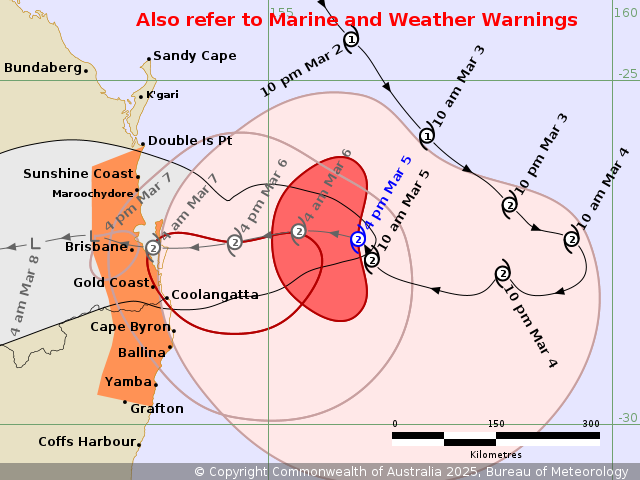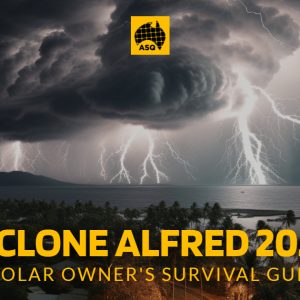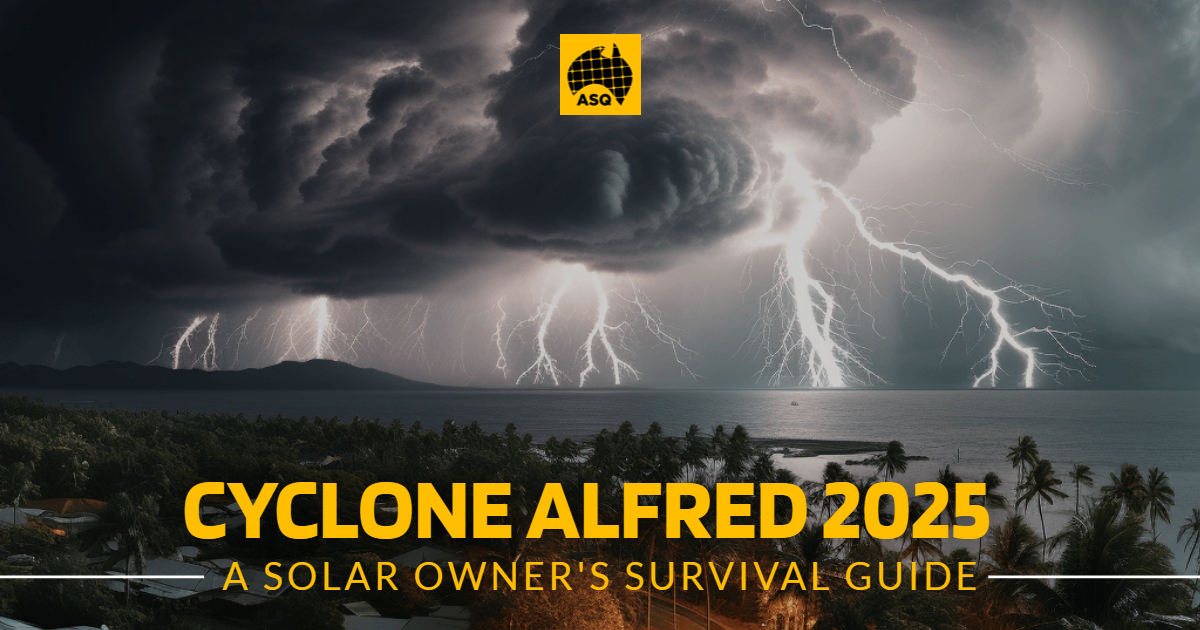Cyclone Alfred is set to bring intense weather conditions to Brisbane, the Gold Coast, and the Sunshine Coast from March 5 to March 8, 2025. With winds reaching up to 150 km/h, this Category 2–3 cyclone has the potential to cause significant damage to homes, businesses, and infrastructure. The risk of flooding, fallen power lines, and power outages is high, and homeowners need to act now to secure their properties.
For those with solar energy systems, taking the right precautions is crucial. While solar panels are designed to withstand severe weather, extreme conditions like cyclones can still pose a risk of damage. Strong winds can loosen or dislodge panels, heavy rain can cause water ingress in electrical components, and debris can scratch or crack the surface of panels. By taking the right steps before, during, and after the storm, you can protect your investment and ensure your system continues to function efficiently once the weather clears.
Prime Minister Anthony Albanese, who visited Queensland’s capital, stated that the Australian Defence Force had been deployed at the request of the state government.
“I’m here working with Premier Crisafulli, absolutely in lockstep. There is no political parties here,” Albanese said on Wednesday. “There are no borders between New South Wales and Queensland, just Australians working together.”
What to Expect from Tropical Cyclone Alfred
Authorities have issued warnings across southeast Queensland, urging residents to prepare for potential flash flooding, road closures, and infrastructure damage. The cyclone is expected to bring torrential rainfall, which could result in dangerous storm surges in coastal areas. Emergency services have advised residents to secure outdoor objects, prepare for power outages, and avoid unnecessary travel during the worst of the storm.

Queenslanders are no strangers to extreme weather, but each cyclone presents unique challenges. The key to minimising damage is early preparation. Whether you have a solar PV system, solar battery storage, or a standard home electrical system, now is the time to take proactive steps to protect your property.
Safeguarding Your Rooftop Solar Panels
As a seasoned solar professional, I’ve seen firsthand how cyclones can wreak havoc on solar installations. But don’t worry, there are steps you can take to protect your investment:
- Secure Your Solar Panels: Ensure your solar panels are securely fastened to your roof. If you’re unsure about this, it’s a good idea to get a professional to check.
- Switch Off Your Solar System: Before the storm hits, switch off your solar system to prevent electrical damage. Remember to turn off both the solar supply main switch and the PV array isolator.
- Regular Maintenance: Regular maintenance of your solar system can help identify potential issues before they become major problems during a storm.
Preparing Your Property For The Storm
Beyond your solar system, there are other steps you can take to protect your property:
- Clear Gutters and Drains: Blocked gutters and drains can cause water to back up and potentially enter your home. Make sure these are clear to allow water to flow away from your property.
- Secure Loose Items: Loose items can become dangerous projectiles in strong winds. Secure or store away items like outdoor furniture and garden tools.
- Check Your Insurance Policy: Make sure your insurance policy covers storm and flood damage. It’s also a good idea to have your solar system included in your policy.
- Prepare to Lodge an Insurance Claim: Now, this might seem a bit premature, but trust me, it’s worth thinking about. If Alfred does cause damage, you’ll want to lodge an insurance claim as soon as possible. So, take a moment to familiarise yourself with your insurer’s claim process. It’s also a good idea to snap some photos of your property and belongings before the storm hits. These can be handy to show the condition of things pre-Alfred.
What to Do After Cyclone Alfred Passes Brisbane
Once the storm has passed and it is safe to go outside, it’s important to assess your property for any damage. Do not turn your solar system back on immediately—you need to ensure it is safe to do so first.
The first thing you should do is perform a visual inspection of your solar panels and inverter. Look for any cracks, loose fittings, or exposed wiring. If you notice any damage, do not attempt to fix it yourself—solar systems can still carry live electricity, even if the power is out. Instead, call a licensed solar electrician to assess the situation and make any necessary repairs.
Flooding is another major concern following a cyclone. If your solar inverter or battery storage system has been exposed to floodwaters, it must be inspected by a professional before being switched back on. Water damage can cause serious safety hazards, including electric shocks and short circuits.
In the case of roof damage, solar panels may need to be temporarily removed to allow for repairs. If this happens, ensure that a qualified solar installer reinstalls the system to meet safety and performance standards.
Lodging an Insurance Claim for Solar Damage
If your solar system has sustained damage, contact your insurer as soon as possible. Most home and contents insurance policies cover solar panel damage caused by extreme weather events, but it’s best to check the specifics of your policy.
To speed up the claims process, provide clear photos and documentation of any damage. If you took pre-storm photos, use these for comparison. Your insurance provider may require a professional assessment from a solar technician, so be prepared to arrange an inspection.
Stay Safe & Be Prepared
Cyclone Alfred is a serious weather event, and it’s crucial to take every precaution to protect your home, your family, and your solar system. Preparation is key—by taking the right steps before the storm, you can minimise damage and ensure a smooth recovery once it passes.
If you need assistance inspecting your solar system before or after the cyclone, don’t hesitate to reach out. At Australian Solar Quotes, we’re here to help Queenslanders keep their solar investments safe and running efficiently.
Stay safe, stay informed, and let’s weather this storm together.


